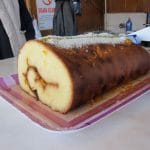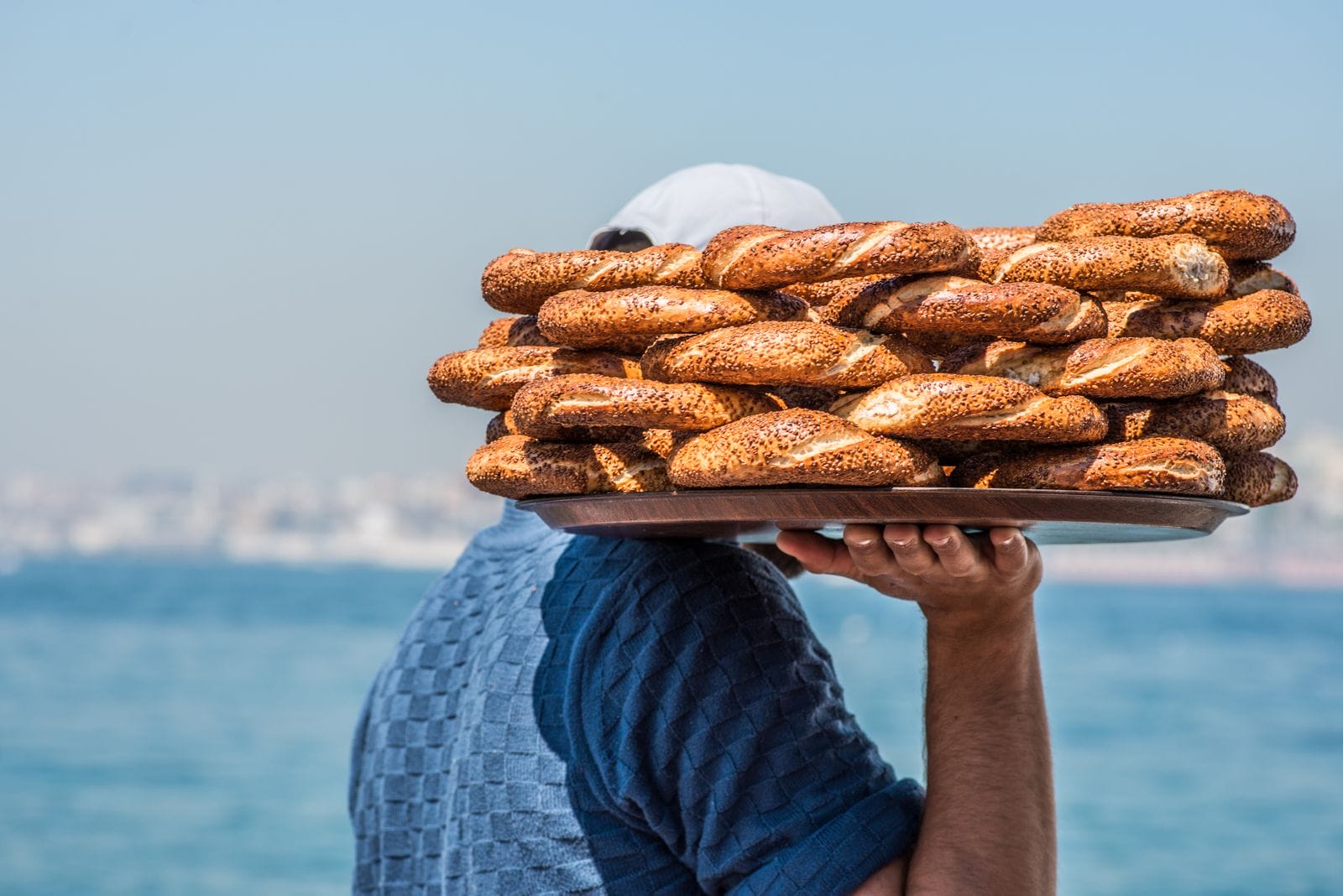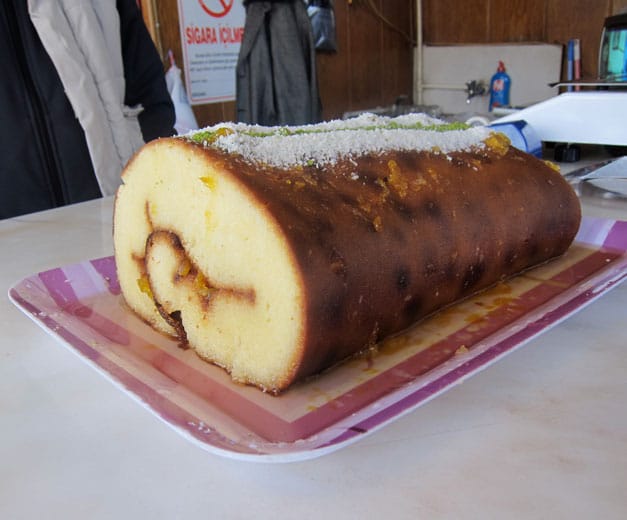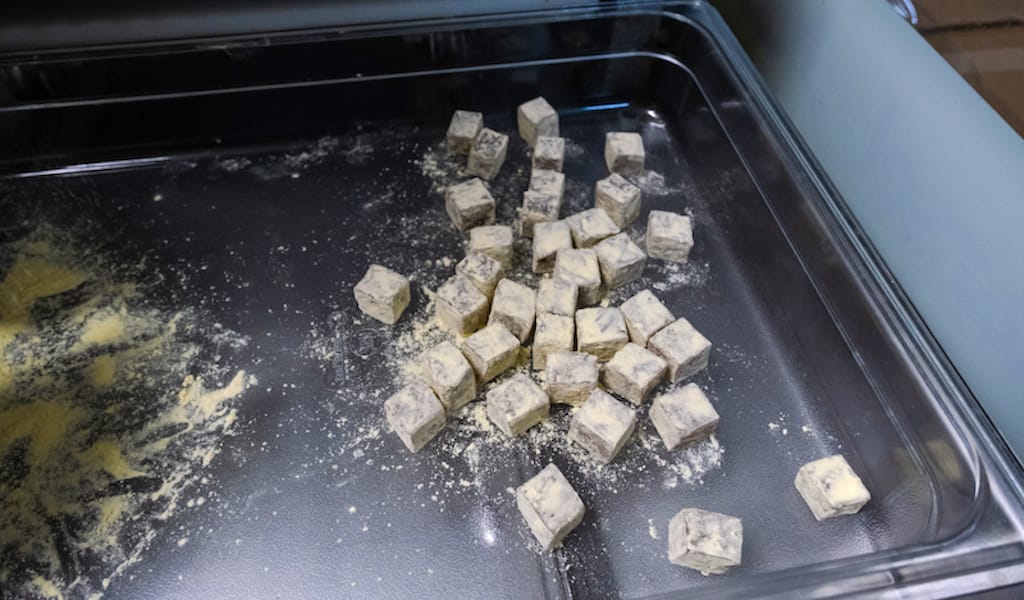Alican Akdemir holds a glass up the light to confirm it is spotless before decanting half of a 200-milliliter green bottle of mineral water. Holding the glass against a napkin, he examines the color and notes the rate and amount of the carbonation, which he describes as “aggressive.” Having noted the visual appearance, he brings the glass to his nose, checking for any odors.
“It shouldn’t smell of anything, just like it should be clear,” he says.
Akdemir takes a sip, gently aspirating.
“It’s slightly sour, salty, and high in carbonation,” he says.
That Akdemir is treating a glass of mineral water like it was a fine wine is not surprising. The Istanbul café owner is Turkey’s first water sommelier, a certification offered by the Doemans Academy in Münich, Germany – which provides training for those in the brewing and beverage industries – and he hopes to change the way that Turks drink mineral water.
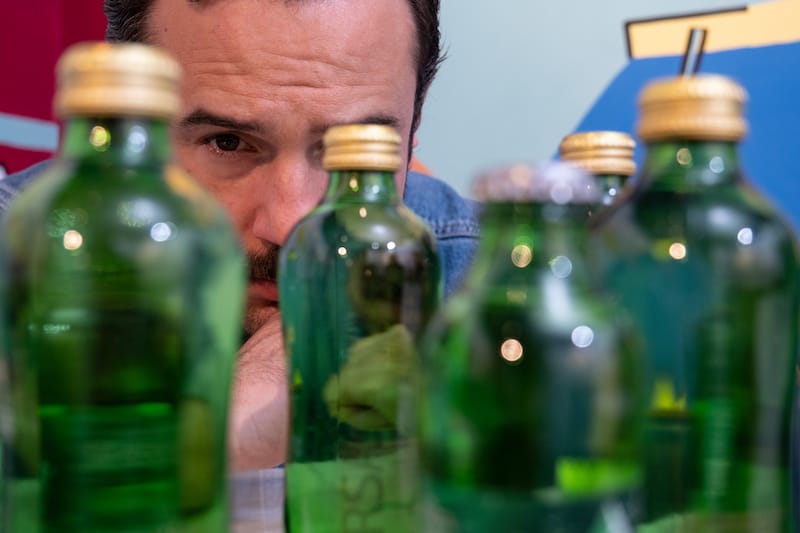
“In Turkey, People tend to drink mineral water with high CO2 after the meal, unlike Europe [where it’s enjoyed] with the meal,” he says.
Akdemir recognizes that the practice of treating mineral water as a digestive is rooted in chemistry. Mineral water is high in sodium bicarbonate, which buffers heartburn-causing acids. But he balks at the idea that high amounts of carbonation are best taken on a full stomach. At his Nişantaşı café, Origami, Akdemir serves mineral water with a lower carbonation level..
“Some brands are working on improving the CO2 quality by looking at the wine sector – at Champagne. They’re trying to achieve that kind of carbonation: small, slow bubbles,” he says.
The water we’ve tasked Akdemir with analyzing comes from Alaşehir in Turkey’s western Aegean region. Akdemir examines the bottle’s label and explains how to read the mineral content, which he describes as “richness.”
“Richness doesn’t mean quality, but rather the total minerals. It’s called “TDS” – total dissolved solids,” says Akdemir.
Pure water is famously compromised of two hydrogen molecules bonded with one oxygen molecule. Pure H20 is tasteless and odorless, but it’s also an extremely effective solvent. Water from natural sources will contain dissolved minerals such as sodium bicarbonate, calcium, and magnesium. These minerals affect the water’s taste profile and mouthfeel.
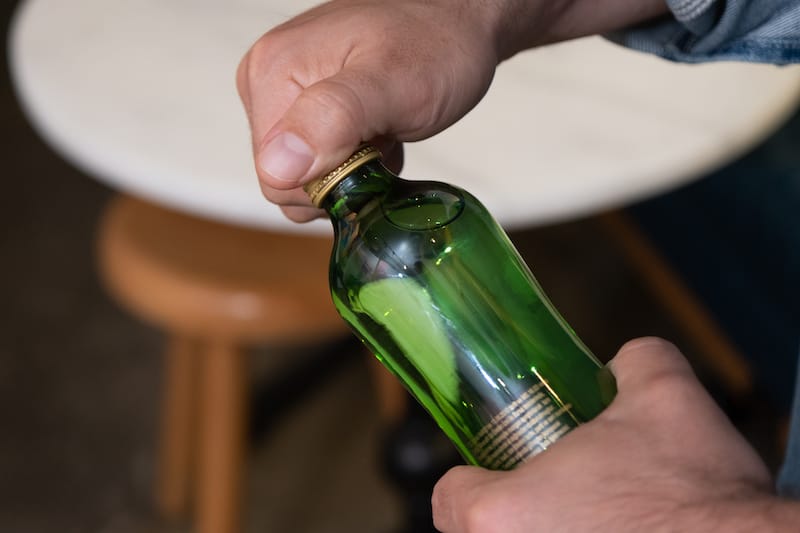
“Just like with wine, the terroir adds those minerals, based on what stones are there. There are direct effects; for example, sodium leads to saltiness,” says Akdemir. “Most of the mineral waters in Turkey are high in minerals. You can taste sour, bitter, and salty notes.”
A water’s TDS is typically written as ppm (parts per million) or mg/L. For normal drinking water, anything above 120 ppm is considered hard. But mineral water will have a much higher mineral hardness, such as Turkey’s Beypazarı brand, which clocks in at a staggering 2127 ppm. For water to be labeled as “mineral water,” no additives are allowed, although in Turkey the water can be purified to remove any impurities.
To maximize one’s appreciation of mineral water’s nuance, Akdemir recommends drinking mineral water cool, but not too cold.
“We recommend you drink them seven to twelve degrees [celsius], max. In Uludağ, this water comes from an altitude of 1500 [meters above sea level]. If it’s 12 degrees there, they recommend you drink the water at the same temperature as the source,” he says.
Though this might be considered best practice amongst water sommeliers, Akdemir admits to breaking with tradition in the summertime.
“When it’s 40 degrees outside, I try to give myself a brain freeze,” he laughs.
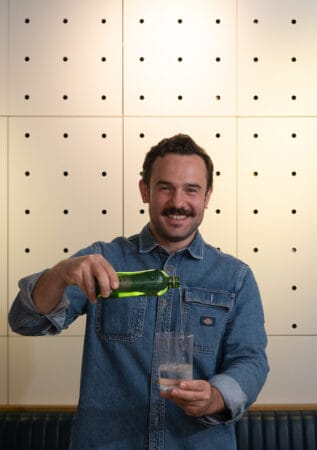
For Akdemir, the journey to become a water sommelier began with a suggestion from his brother, Yiğit Akdemir. The Akdemir brothers run a culinary consulting firm, Yeme İçme İşleri, and Yiğit believed water expertise would have synergy with existing projects in the craft beer and fine spirits sector. For both brewing and distilling, water chemistry is critical.
Alican was initially skeptical, but the course at the Doemans Academy opened his eyes to the complexity and potential of mineral water. He realized Turkey’s mineral water sources are every bit as praise-worthy as more famous brands such as Italy’s San Pellegrino or Georgia’s Borjomi. Like these internationally-known brands, Turkish mineral water is sourced from mountain aquifers. These saturated rock beds act as a natural filter, removing impurities from the water while imparting minerals, creating the liquid’s unique flavor profile.
But, like many in the water sector, Akdemir is also concerned about water resource management in light of increasing consumption and decreasing water tables.
In January of 2023, Turkish First Lady Emine Erdoğan helped launch the “Water Efficiency Campaign,” which urged citizens and businesses to waste less water. The campaign coincided with levels at Istanbul’s water reservoirs dipping below 35 percent of total capacity.
For Akdemir, part of the solution starts with the recognition of the preciousness and vulnerability of Turkey’s water supplies. He hopes that greater public awareness of water scarcity will lead to better corporate responsibility. For Akdemir, part of the issue is a prevailing business culture of secrecy. In his own consulting work, Akdemir encourages water companies in Turkey to share more about their sources, and is slowly seeing the sector shift toward great transparency. Akdemir has taken chefs and other culinary professionals on field trips to mineral water sources, and he dreams of seeing sites opened up to the general public.
“In Germany, you can go to the source, have a picnic, and do a water tasting,” says Akdemir. “I’m advising Turkish water companies to open their factories [to the public]. I think they will see the value in this in a couple of years.”
In the meantime, Akdemir recommends that consumers start paying closer attention to their water by reading the label and noting the mineral content and source.
“I tell people: don’t choose a brand, choose a source,” he says.
Michael ButterworthGökhan Çelem
Published on July 03, 2023
Related stories
February 28, 2024
Food Tours NDQuick Bite: This full-day Istanbul market tour draws from our best-of list in the European side’s Karaköy neighborhood and the Asian Kadıköy, tied together by a Bosphorus crossing, visiting two markets on two continents. Our favorite Istanbul experiences include exploring the eateries in local markets and crossing the Bosphorus on the public ferry. The route for…
July 18, 2022
IstanbulSettling into our first cross-country journey in Turkey many years ago, we were pleasantly surprised by the comforts of Turkish bus travel. The young garson wore a proper uniform and dribbled cologne onto our hands every hour or so. Tea was served regularly, accompanied by one of our early Turkish culinary discoveries, Eti brand pop…
May 23, 2022
Istanbul | By Michael Butterworth
IstanbulFrom syrup-drenched baklava to creamy milk puddings, Turkey has no shortage of sweet treats. But perhaps none have intrigued foreign visitors to Turkey as much as Turkish delight. Lokum is famous in the English-speaking world as the enchanted confection that entices Edmund to join the White Witch in The Lion, the Witch, and the Wardrobe,…












































